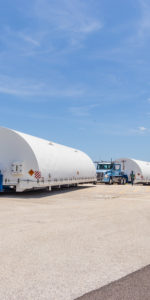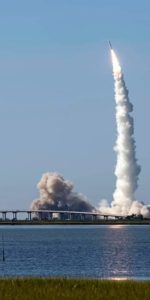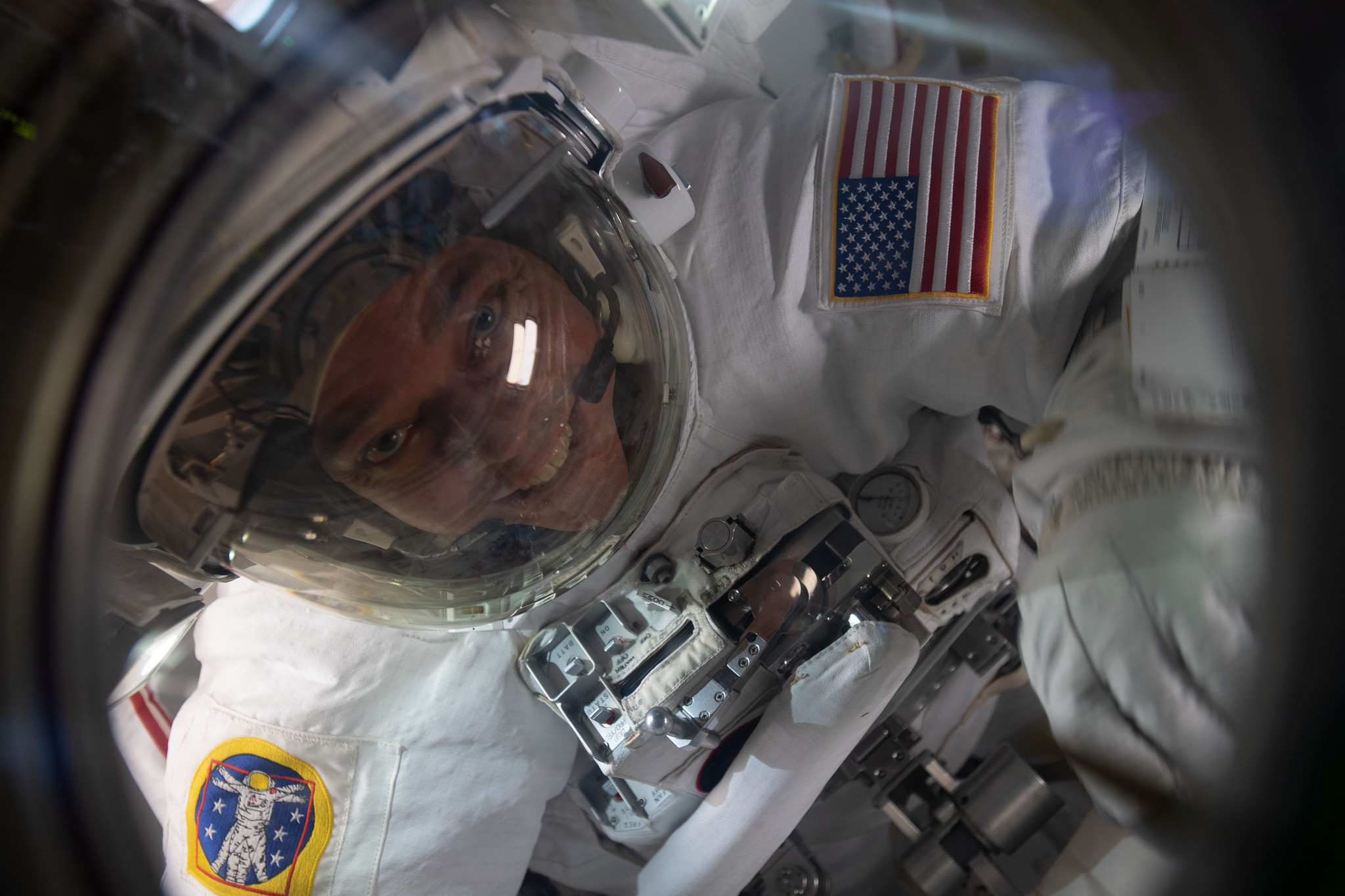
Two of America’s most seasoned spacewalkers will team up yet again in the coming days to complete a three-year-plus campaign to replace 48 aging nickel-hydrogen batteries with 24 smaller, lighter and more capable lithium-ion batteries in the Integrated Truss Structure (ITS) of the International Space Station (ISS). Tomorrow (16 July) and Tuesday of next week (21 July), Expedition 63 Commander Chris Cassidy and Flight Engineer Bob Behnken—both veterans of eight previous Extravehicular Activities (EVAs) during their astronaut careers—will complete two more spacewalks to wrap up the final battery replacements in Power Channel 3B of the station’s far-starboard S-6 truss.
Current planning envisages the two spacewalkers floating out of the station’s Quest airlock at about 7:35 a.m. EDT on both days, with up to seven hours alloted for both EVAs. Designated “U.S. EVA-67” and “U.S. EVA-68”, as their names imply these will be the 67th and 68th spacewalks conducted in U.S. space suits, out of the Quest airlock, and without a Space Shuttle being present, since the pioneering U.S. EVA-1 by Expedition 4 crewmen Carl Walz and Dan Bursch back in February 2002. In spite of the seven hours set aside for the EVAs, Cassidy and Behnken’s experience and speedy progress—in which they worked a couple hours ahead of the timeline on the recent EVA-65 and EVA-66—makes it increasingly probable that they will power through their tasks with gusto. But as Cassidy himself cautioned in a recent space-to-ground interview, it only takes a stuck bolt to put them two hours behind the timeline.
That said, the duo’s experience is immense. Both are also former heads of NASA’s astronaut corps, making this mission the first time that two ex-chiefs have flown together in space. And Cassidy worked to develop much of the EVA choreography for the S-6 battery replacement task in the months prior to his April 2020 launch.
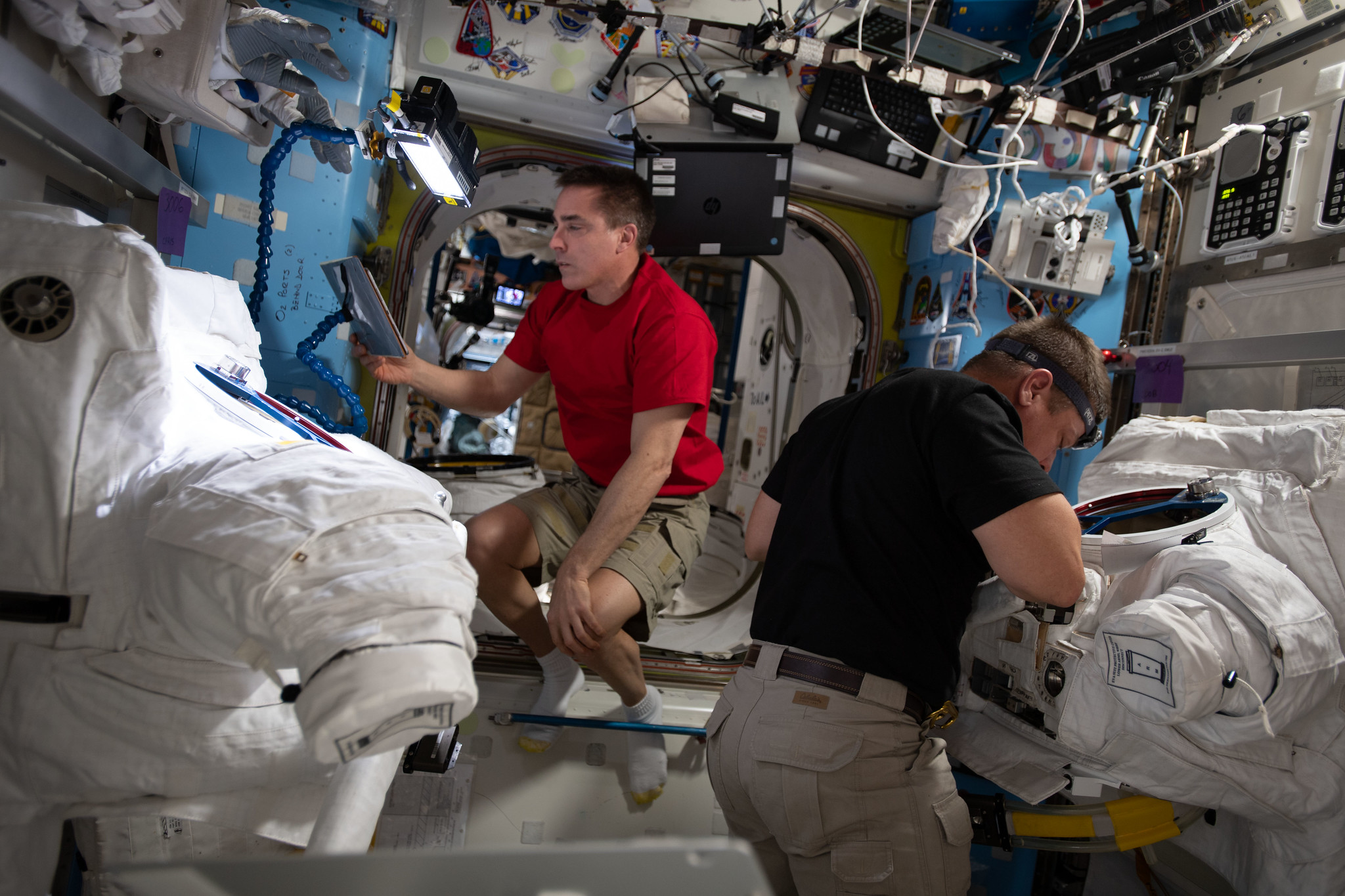
By the time they wrap up these next two EVAs, the two men will join Mike Lopez-Alegria and Peggy Whitson as the third and fourth Americans to have logged as many as ten spacewalks in their careers. Moreover, if they do achieve as many as 14 additional EVA hours from their two upcoming excursions, they will push themselves up the experience pole, with Behnken possibly rising as high as third place on the list of all-time most experienced spacewalkers, just behind Lopez-Alegria and the incumbent world-record-holder, Russian cosmonaut Anatoli Solovyov. Cassidy lags a little behind his crewmate, although he still looks set to position himself squarely within the Top Ten.
An additional detail for the second of these upcoming spacewalks is that EVA-68 will be the 300th excursion in U.S. spaceflight history, since Ed White—grasping a small maneuvering “gas-gun” in his gloved hands—poked his head out of Gemini IV on 3 June 1965 and then spent 21 minutes tumbling in the void.
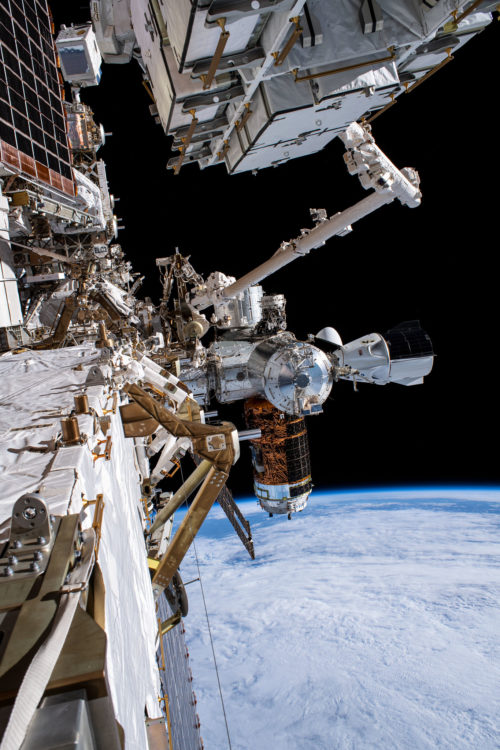
Efforts to replace 48 nickel-hydrogen batteries in the space station’s four power-generating trusses—12 each in the S-4, P-4, P-6 and S-6 segments—with 24 lithium-ion units have been ongoing since January 2017. The “inboard” S-4 battery work was done first, followed by the P-4 truss in March 2019, with both tasks requiring only a pair of EVAs, as their work sites were situated closer to the airlock and the center of the station. However, the P-6 and S-6 trusses lie out of easy reach of the 57.7-foot-long (17.6-meter) Canadarm2 robotic arm, which placed added demands on the spacewalkers in getting themselves, their tools and the batteries out to the worksite. As such, the P-6 battery work, conducted between October 2019 and last January, necessitated four EVAs. And the S-6 task is expected to follow a similar pattern, with Cassidy and Behnken having completed one channel in two EVAs in recent weeks and the second channel over EVA-67 and EVA-68.
One key change from the last two spacewalks is that, this time around, Behnken will serve as chief spacewalker (“EV1”), identifiable by red stripes around the legs of his space suit, whilst Cassidy will wear the pure-white suit (and be designated “EV2”). According to NASA’s Rob Navias, the decision to switch roles has been done in order to gain experience in the EV1 role for both astronauts.
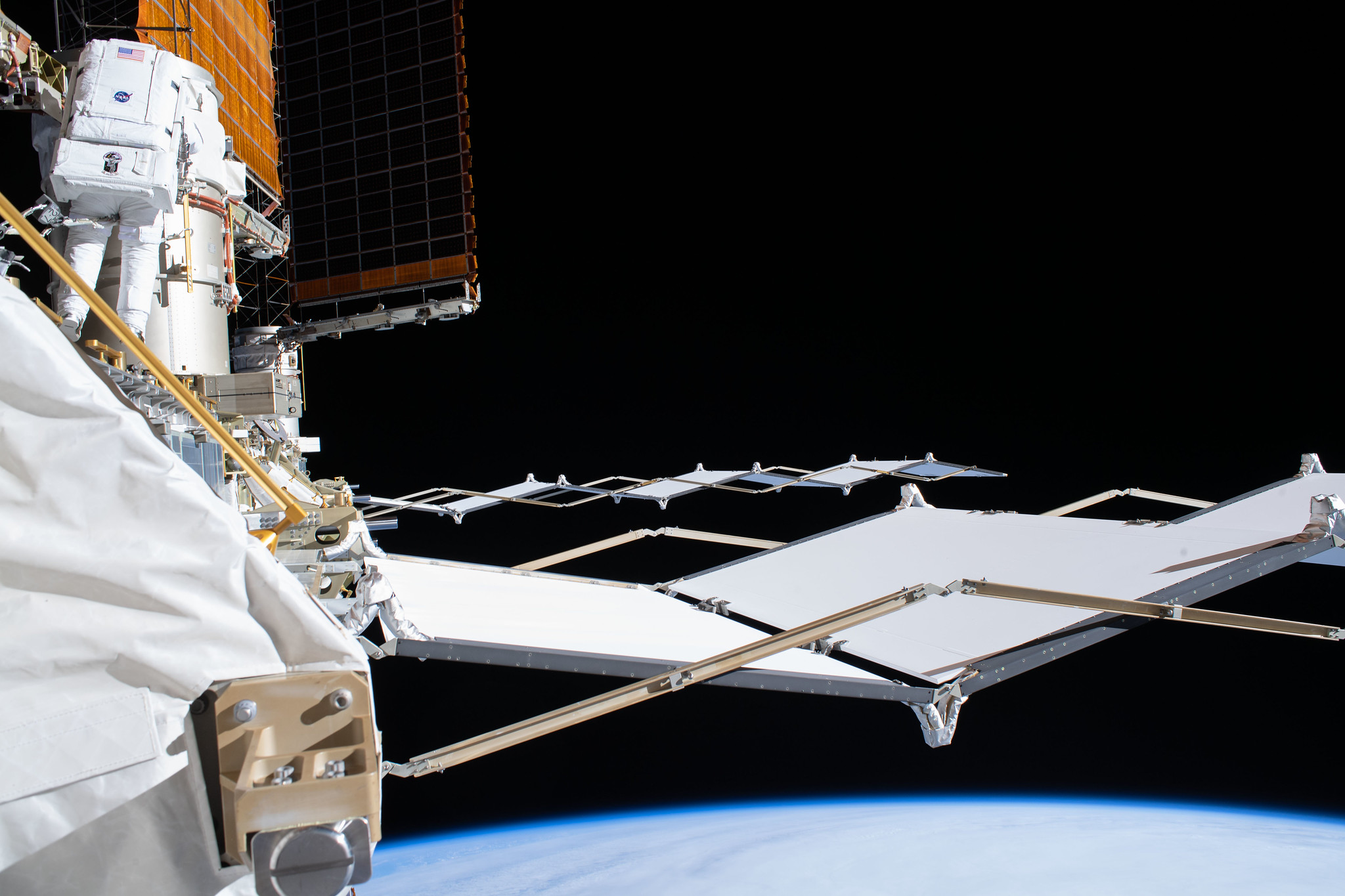
In among their ongoing scientific research and upkeep of the sprawling orbital outpost, Cassidy, Behnken and Expedition 63 crewmate Doug Hurley have worked in recent days to prepare suits and tools for what are expected to be the final EVAs whilst Dragon Endeavour remains docked. Another EVA to install the Bartolomeo payloads-anchor and the Columbus Ka-band Antenna (Col-KA) onto the European lab has been shifted further downstream. “Under review,” Mr. Navias told AmericaSpace about when the Bartolomeo/Col-KA EVA might take place, “but won’t happen before DM-2 comes home.”
Late last week, Cassidy dumped water and purged gas from the two suits, before the trio gathered for a few hours earlier this week to review step-by-step EVA procedures and participate in a conference with spacewalk specialists in Mission Control. Hurley worked to charge the batteries for the suits and later helped to install them and also fit metal oxide canisters to remove exhaled carbon dioxide.
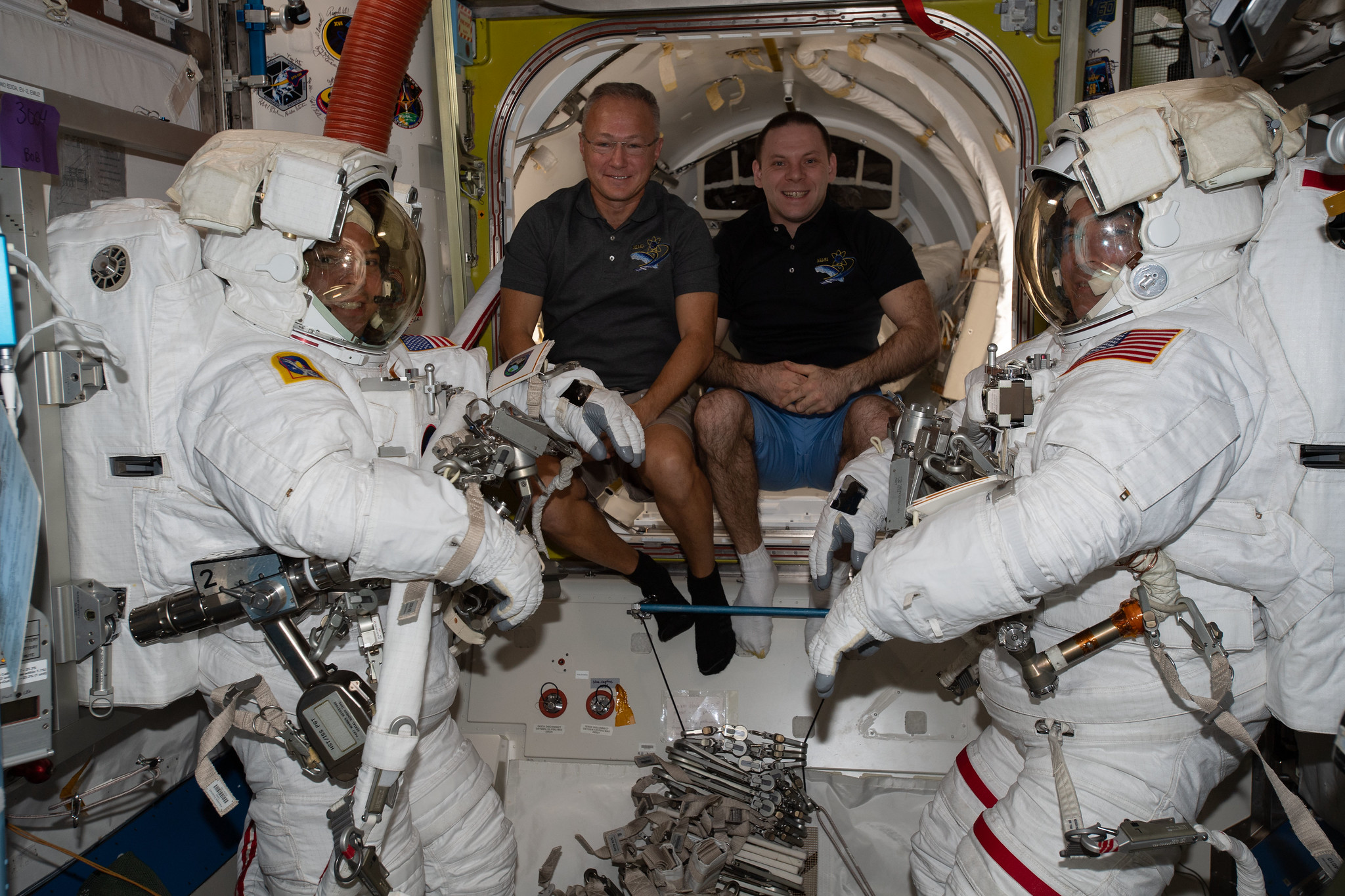
Following a similar protocol to their recent EVAs, the spacewalkers will be assisted into their suits and into the Quest airlock by their Expedition 63 crewmates Doug Hurley and Ivan Vagner. And just like before, Behnken and Cassidy will pluck out five of the six old nickel-hydrogen batteries and fit three new lithium-ion batteries—plus circuit-closing adapter plates—on Wednesday. They will then pick up the remainder of the task on Tuesday, 21 July, pulling out the final nickel-hydrogen battery.
Judging from their most recent EVAs, this primary task of EVA-68 should be concluded in a couple of hours, leaving Behnken and Cassidy some additional time for “get-ahead” activities. Topping the list of the removal of two lifting “H” fixtures, used for the ground processing of the station’s solar arrays prior to launch. During the 1 July spacewalk, Behnken encountered difficulties removing one H-fixture.
They will also work together to prepare the port-facing Common Berthing Mechanism (CBM) of the Tranquility node for the installation of NanoRacks’ Bishop commercial airlock later this fall. Provided through a collaborative effort involving NanoRacks, Thales Alenia Space, NASA and Boeing, the airlock will ride in the unpressurized “trunk” of SpaceX’s next Dragon cargo ship as early as October. Plans to build Bishop as the first-ever privately-financed airlock for the ISS were announced two years ago, via Space Act Agreement. Boeing has fabricated a passive CBM for the new airlock, capable of releasing small CubeSats and other deployable payloads.




